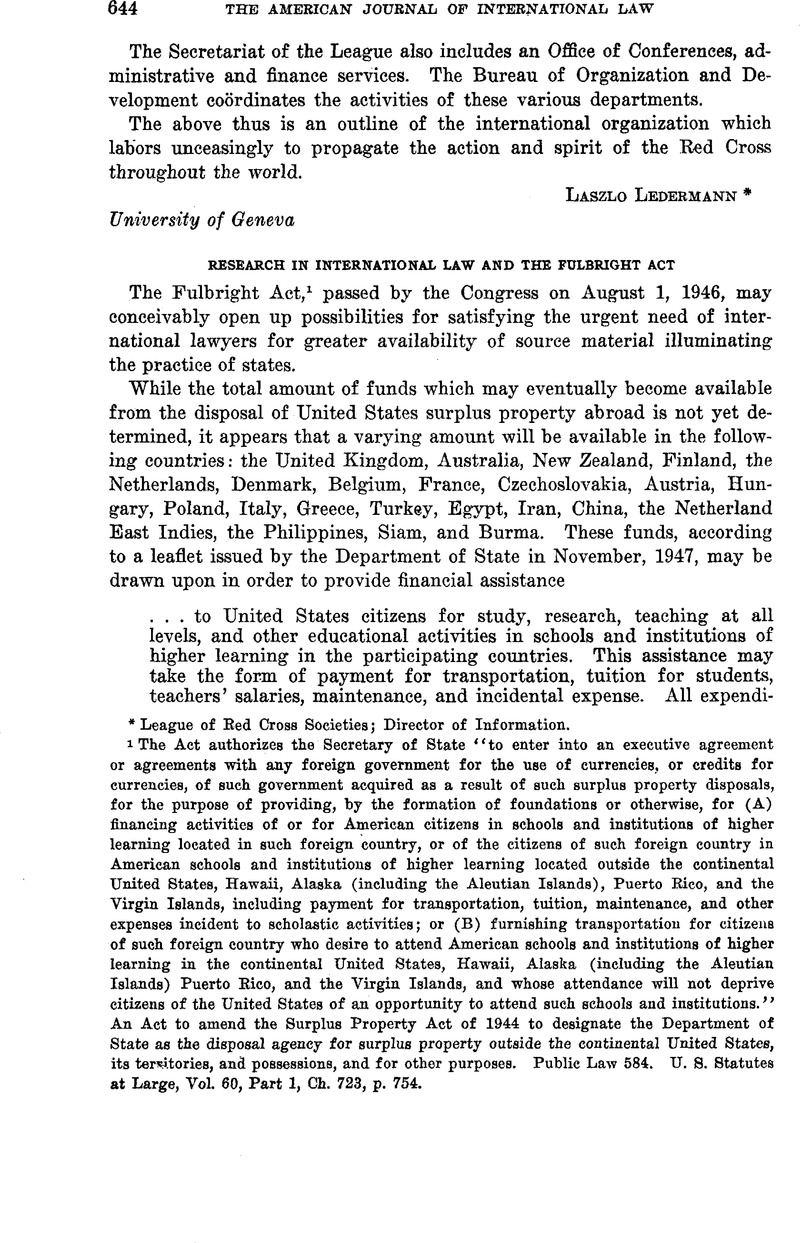No CrossRef data available.
Article contents
Research in International Law and the Fulbright Act
Published online by Cambridge University Press: 20 April 2017
Abstract

- Type
- Current Notes
- Information
- Copyright
- Copyright © American Society of International Law 1948
References
1 The Act authorizes the Secretary of State ' ' to enter into an executive agreement or agreements with any foreign government for the use of currencies, or credits for currencies, of such government acquired as a result of such surplus property disposals, for the purpose of providing, by the formation of foundations or otherwise, for (A) financing activities of or for American citizens in schools and institutions of higher learning located in such foreign country, or of the citizens of such foreign country in American schools and institutions of higher learning located outside the continental United States, Hawaii, Alaska (including the Aleutian Islands), Puerto Bico, and the Virgin Islands, including payment for transportation, tuition, maintenance, and other expenses inc dent to scholastic activities; or (B) furnishing transportation for citizens of such foreign country who desire to attend American schools and institutions of higher learning in the continental United States, Hawaii, Alaska (including the Aleutian Islands) Puerto Bico, and the Virgin Islands, and whose attendance will not deprive citizens of the United States of an >opportunity to attend such schools and institutions.'' An Act to amend the Surplus Property Act of 1944 to designate the Department of State as the disposal agency for surplus property outside the continental United States, its territories, and possessions, and for other purposes. Public Law 584. U. S. Statutes at Large, Vol. 60, Part 1, Ch. 723, p. 754.
2 Doc. A/504, 20 November, 1947, p. 8.
3 22 British Year Book of International Law (1945), p. 310.
4 Smith,, H. A. Great Britain and the Law of Nations, Vol. 2 (1935), Pt. 1, p. vi.Google Scholar
5 Smith,, H. A. Great Britain and the Law of Nations, Vol. 1 (1932), p. x.Google Scholar


